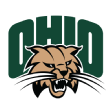Conferences have up years and down years, and a down year for the MAC can get awfully bad. The East Division graded out as the worst in FBS, per SP+, with defending champion Buffalo plugging in a bunch of new pieces, Miami (Ohio) undergoing a youth movement, and Bowling Green and Akron bottoming out under first-year coaches.
Down years can mean opportunities, though. Miami stole the division title from Ohio despite the youth, and Kent State rode a late winning streak to its first bowl win, and both programs seem to be on different trajectories than before. Buffalo has reloaded, too, and Ohio is a quarterback away from fielding Frank Solich’s best team in Athens. Things are looking up for this division, and we could see a heck of a title race.

Bowling Green
Head coach: Scot Loeffler (3-9, second year)
2019: 3-9 (2-6 in MAC), 128th in SP+
2020 projection: 3-9, 127th in SP+
Top returning players: DE Karl Brooks, WLB Kholbe Coleman, RG Tim Tanner-Blair, TE Quintin Morris, WR Julian Ortega-Jones
Miami (Ohio) has technically trademarked the whole “cradle of coaches” thing, and not without reason — hire Paul Brown, Woody Hayes, Bo Schembechler, Sid Gillman, et al., and you get to strut around a bit.
The entire MAC has been a “cradle” of sorts, though. In a conference this geographically packed together, with no infrastructure advantages and resources allocated pretty equally, the quality of your head coach means pretty much everything. And just about every school has had some good ones (and then lost them to bigger schools).
Bowling Green is no exception. The Falcons enjoyed a run of winning seasons under coaches like Doyt Perry and Don Nehlen. They enjoyed a solid run with Gary Blackney in charge in the ’90s, too, and when he went a bit stale, they replaced him with a guy named Urban Meyer. They won a MAC title with Dave Clawson, and after losing him to Wake Forest, they won another one with Dino Babers.
You’re only as good as your next hire, though. When Babers left for Syracuse, BGSU, in an attempt to maintain an offense-friendly reputation, replaced him with former Texas Tech running backs coach Mike Jinks. He hadn’t ever coached outside of the state of Texas and had only coached in college for three years. It was one of the most confusing hires of the 2010s. After winning 10 games in 2015, the Falcons won nine combined from 2016-18. And after Jinks was fired, the school replaced him with veteran Scot Loeffler.
Loeffler’s reputation was built in part by serving as a Michigan GA when Tom Brady was there and by spending a year as Tim Tebow’s QB coach at Florida. Per SP+, the best offense he ever coordinated (2015 Virginia Tech) ranked 57th. Still, he was part of a muscular and unique attack as Boston College’s offensive coordinator from 2016-18, and you could see outlines of that in what he tried to install last year at Bowling Green.
Tight end Quintin Morris was BGSU’s leading receiver, and quarterbacks Grant Loy and Darius Wade (each over 220 pounds) combined for about 15 non-sack carries per game. Another reasonably big receiving option, 6-foot-2 freshman Julian Ortega-Jones, provided some occasional pop, too.
Having an identity is important, but this offense wasn’t good. BGSU ranked 128th in offensive SP+, scoring more than 20 points just twice against an FBS opponent. The run game was semi-efficient but not at all explosive, and the passing game was mostly dreadful.
With Loy and Wade gone, Loeffler will likely hand the reins to either junior Matt McDonald or one of two incoming freshmen (Tucker Melton or Riley Keller). Morris, Ortega-Jones and running back/slot man Bryson Denley could provide decent upside, and the line returns four players with at least 400 snaps last year. And with a stable of intriguing tight ends at his disposal, Loeffler could play with any number of bulky formations. Overall growth will probably be minimal, though.
Loeffler’s defensive coordinator, Brian VanGorder, was in some ways the Loeffler of defensive assistants — known more for experience than actual success. And like Loeffler, the former Georgia, Auburn, Notre Dame, Louisville and Atlanta Falcons DC installed an identity while enjoying little success. BGSU ranked 26th in sack rate but couldn’t force passing downs — on standard downs (second-and-7 or less, third- or fourth-and-4 or less), they ranked 125th in success rate and 130th in marginal explosiveness.
The good news is they return their best pass-rushers in end Karl Brooks (4.5 sacks, 11% pressure rate) and weakside linebacker Kholbe Coleman (17% pressure rate). The bad news: the secondary has to replace three of last year’s top four tacklers. Sophomore safety Jordan Anderson is pretty good in coverage but will likely be asked to put out a lot of fires with the aggression-based disasters taking place in front of him.
More bad news: Per SP+, BGSU had the worst special-teams unit in the country last year. Punt returner Jake Rogers was the strength of the unit. He averaged 5.5 yards per return.
Despite having little to sell, Loeffler inked a solid recruiting class this past winter, and if having a solid identity turns into having a solid culture, BGSU could get rolling at some point. But with the program coming off of its worst four-year span in its five-decade FBS history, it’s probably going to take him a while to turn things around, even if he’s more of a Babers than a Jinks.

Akron
Head coach: Tom Arth (0-12, second year)
2019: 0-12 (0-8), 129th in SP+
2020 projection: 4-8 (2-6), 125th in SP+
Top returning players: CB Jalen Hooks, ILB Bubba Arslanian, KR Michael Mathison, QB Kato Nelson, CB A.J. Watts
It’s hard fielding a football team. You’ve got something close to triple-digit players (including walk-ons), double-digit coaches, radio guys, bus drivers, camera operators, facilities people … you need fans to show up … even a minor football game is a massive undertaking, if you think about it.
It’s such an undertaking that everybody deserves to enjoy victory every now and then. An 0-12 record is both bad luck and abject cruelty. A 17-game losing streak is even worse.
The next time Akron plays a football game, it will have been 679 days since the Zips’ last win. They could be favored in each of their first two games of 2020 — a visit from FCS team Youngstown State and a trip to New Mexico State. Here’s hoping they get the monkey off their collective backs and win at least one of those.
The Akron job has been an historically difficult one, even by MAC standards. In 33 years in FBS, the Zips have won more than seven games in a season just once — Terry Bowden’s squad prevailed in the 2015 Idaho Potato Bowl to finish that campaign 8-5. That Bowden went 34-41 over his final six years in Akron was a solid accomplishment, but his tenure ended at 4-8 in 2018.
Tom Arth took over, and if nothing else, he knew what he was getting into. He graduated from Cleveland’s Saint Ignatius High School and attended Division III’s John Carroll, in University Heights, Ohio, where he also coached for the first seven years of his career. After a two-year stint at Chattanooga, the 38-year-old got called back to Ohio.
Things fell apart pretty quickly for Arth last fall. After scoring 20-plus points three times in their first five games, the Zips scored a total of 43 in their last seven. They had the least efficient offense in the country — the least anything offense, really: 130th in offensive SP+ — and Arth went into full-on youth movement mode: 23 offensive players and 21 defenders logged at least 100 snaps. Of those 44 players, 33 are slated to return, and Arth brought in 10 juco or FBS transfers as well. Experience won’t be nearly the issue it was in 2019; talent, on the other hand? We’ll see.
Arth and offensive coordinator Tommy Zagorski prefer a pass-heavy attack, but their most proven quarterback, Kato Nelson, is far better with his feet (5.1 yards per non-sack carry last year, 41% success rate) than his arm (4.8 adjusted net yards per attempt, 54% completion rate). Redshirt freshman Zach Gibson got an 81-pass audition over four games but averaged only 2.5 ANY/A.
This offense can do some damage against man defense — Nelson averaged 8.1 yards per attempt vs. man coverage and can also take off running if defenders’ backs are turned. Slot receiver Jeremiah Knight is a solid quick-strike option, too. You’re going to see mostly zone in the MAC, though, and that negates most of the Zips’ relative advantages. The return of lanky receiver Jonah Morris (14.7 yards per catch in 2019) could help against either type of defense, at least.
Defensive coordinator Matt Feeney inherited a bit more than his offensive counterparts and had a few more encouraging moments. The Zips were legitimately good in big-play prevention (31st in marginal explosiveness, 30th in gains of 10-plus yards allowed per game), and they were solid in goal-to-go situations. Granted, bend-don’t-break defenses are more effective if they don’t bend as much as Akron’s did (122nd in success rate allowed).
Unfortunately, safeties Alvin Davis Jr. and Shawn Featherstone are gone. Corners Randy Cochran Jr., A.J. Watts and Jordyn Riley are one of the better tandems in the league, but the run defense is unproven, especially with linebacker John Lako also gone.
The special teams unit has a lovely weapon in Michael Mathison (25.6 yards per return), but that’s about it — the Zips were 120th in punt efficiency, 115th in field goal efficiency, and 125th in overall Special Teams SP+ in 2019.
Akron’s short-term saving grace is that the 2020 schedule offers plenty of win opportunities. The Zips are projected just 125th overall, but SP+ gives them a 16% chance of reaching bowl eligibility because of a schedule that features eight opponents projected 93rd or worse. Five of those opponents have to visit InfoCision Stadium, too. Scoring any win would represent growth, and Arth’s Zips might manage a few of them.

Kent State
Head coach: Sean Lewis (9-16, third year)
2019: 7-6 (5-3), 105th in SP+
2020 projection: 4-8 (3-5), 112th in SP+
Top returning players: QB Dustin Crum, WR Isaiah McKoy, S KJ Sherald, ILB Manny Lawrence-Burke, RG Nathan Monnin
The best comeback story of 2019 ended in a green smoothie bath. That might be the most college football sentence you’ll read all year.
Kent State was on the doorstep of a 3-7 record, trailing Buffalo by three touchdowns midway through the fourth quarter. The Golden Flashes then pulled off something incredible, not only scoring 24 point in eight minutes to beat the Bulls in my No. 18 game of 2019, but also eking by Ball State and EMU to qualify for just their third bowl ever. And in the Tropical Smoothie Cafe Frisco Bowl, they scored their first bowl win, 51-41 over Utah State. Bath time.
GREEN SMOOTHIE BATH ✅
Kent State celebrates its first bowl win! pic.twitter.com/9eyYaS7OIj
— ESPN College Football (@ESPNCFB) December 21, 2019
It’s an incredible timeline: Late on the evening of Nov. 14, Kent State’s season was all but over, and coach Sean Lewis had little to show for his two years in northeastern Ohio. Just over a month later, he was in charge of a surefire program on the rise. And Lewis had bought himself some leeway in case his Golden Flashes couldn’t quite maneuver through an absolutely ridiculous schedule in his third year.
The best thing I can say about Kent State’s schedule in 2020 is that it will provide plenty of exposure. The comeback, bowl win and smoothie bath will inevitably get shown as secondary plot footage as the Golden Flashes are, according to SP+, losing by 39 to Penn State, 27 to Kentucky and 42 to Alabama. Assuming they get by Kennesaw State, a solid FCS program, in Week 2, they’ll enter conference play needing to go at least 5-3 to bowl again. Doable? Certainly. They did it last year, after all. But they’ll need to pull an upset or two to make that happen.
The key to sustaining 2019’s late surge: sustaining Dustin Crum‘s and Isaiah McKoy‘s late surge — the pass-catch duo caught fire. Crum went from averaging 11.1 yards per completion to 14.2, and he went from 8.8 non-sack carries per game to 12.8 while still averaging nearly 7 yards per carry. McKoy, meanwhile: 13.1 yards per catch over the first nine games, 20.3 over the last four.
Outside of McKoy, Crum will be looking at some different faces in the skill corps. The next-leading receiver is senior Keshunn Abram, and he caught just eight balls. A lot could be asked of young receivers like Ja’Shaun Poke and Dante Cephas. Two of the top three running backs are gone, too, although junior Xavier Williams and sophomore Joachim Bangda (combined: 792 rushing and receiving yards) should be just fine, and they’ll have an experienced line in front of them.
Defensive coordinator Tom Kaufman’s general approach in 2019 was to bend as long as possible and hope that a defensive back eventually made a play. It worked at times — safeties KJ Sherald and Qwuantrezz Knight combined for 15.5 tackles for loss, 11 passes defensed, and even 20 run stuffs, while corners Elvis Hines and Jamal Parker picked off three passes and broke up another 17. Knight, Parker, and safety Akeam Peters are gone, though, which means that a front seven dealing with its own turnover (three of the top four linemen are gone) will have to step up a bit.
Inside linebackers Manny Lawrence-Burke and Cepeda Phillips (combined: 11.5 TFLs, 19 run stuffs) are solid, but the line is dramatically undersized, as it was last year — aside from 320-pound sophomore nose tackle Buddha Jones, none of the five other experienced linemen returning weigh in at more than 258. It’s not surprising, then, that Kent State ranked 119th in success rate allowed and gave up 4-plus yards on 54% of opponents’ carries (125th). You could push them around, and there’s nothing saying you won’t be able to this year, too. Recruiting hasn’t solved this issue just yet.
There’s also turnover to deal with in what was an excellent special teams unit. The Flashes were 14th in Special Teams SP+ thanks to the trio of punter Derek Adams, kicker Matthew Trickett, and kick returner Jamal Parker, but only Trickett returns.
There is only one goal for 2020: eking out another bowl bid. That might be hard to do. But Lewis’ relentless energy and positivity bore fruit last November and December, and while Crum and other key contributors will be seniors, he’s going to be relying quite a bit on his sophomore class as well. And those sophs will become upperclassman leaders in 2021 and beyond. The future’s still pretty bright.

Miami (Ohio)
Head coach: Chuck Martin (30-45, seventh year)
2019: 8-6 (7-2), 102th in SP+
2020 projection: 6-6 (4-4), 98th in SP+
Top returning players: LT Tommy Doyle, DE Kameron Butler, S Sterling Weatherford, CB Emmanuel Rugamba, WR Jalen Walker
Advanced stats are really good at saying, “Well, actually …” sometimes.
You could make a solid case that, after years of toiling around .500, Chuck Martin’s Miami program took a definitive leap forward in 2019. After struggling against excellent Iowa, Cincinnati and Ohio State teams in nonconference play, the Redhawks won seven of nine games, upsetting Ohio in Athens and CMU in Detroit to win their first MAC title since 2010.
That’s typically the type of breakthrough that earns you a coaching promotion — the MAC champ subsequently lost its head coach to a bigger job seven times between 2009 and ’18. But Miami kept Martin, meaning the Redhawks will become an emerging MAC superpower, right?
Well, actually …
Miami finished the season just 102nd in SP+, well behind both Ohio (50th) and Buffalo (71st) in the MAC East. They were 119th after a 38-16 loss to WMU in Week 7 and clearly improved from that point forward, but the ceiling was still pretty low.
The main source of their success was winning the close games they had spent years losing. They were 5-0 in one-score finishes and have now won seven such games in a row. That’s a sharp correction for a team that had lost its previous nine one-score games before that. Instead of regressing toward a .500 stasis, they’re careening from one extreme to the other. It made them an unlucky 5-7 in 2017, and it made them a lucky division champ in 2019.
Miami was outgained in four of its conference wins — by 96 yards in a 24-21 win over Ohio, for instance, and by 133 in a particularly strange 34-20 win over Buffalo. That is, to say the last, not a sustainable way of winning games.
There’s another way you can spin this, though: Lucky or not, they won the East during a youth movement. Freshman Brett Gabbert was behind center, and due to either injury or choice, running back Tyre Shelton, receiver James Maye, and guards Caleb Shaffer and Rusty Feth all played major roles. The Redhawks’ leading rusher and receiver each missed three games, and not a single offensive lineman started all 14 games. The offense was a disheveled mess, and Miami won eight games and improved down the stretch regardless.
Maybe the good close-games luck reverts again, but maybe the bad injuries luck does, too? Martin now has one of the deepest rosters in the MAC, and SP+ gives the Redhawks a puncher’s chance at 8-plus wins again, even with normal luck.
Any success will likely be driven by the defense. The Redhawks finished 77th in defensive SP+, third-best in the MAC. They rushed the passer with abandon (17th in sack rate) and cast a balance between efficiency (42nd in passing success rate) and big-play prevention (26th in passing marginal explosiveness). Defensive co-coordinators John Hauser and Spence Nowinsky did a phenomenal job of utilizing the nickelback position — primary nickels Bart Baratti and Travion Banks combined for 12.5 tackles for loss, six interceptions, seven pass breakups, and 14 run stuffs. They were deployed from just about everywhere; Baratti even rushed the passer 76 times, creating three sacks and an 18% pressure rate.
Baratti and Banks are both gone, however. Veteran safeties Sterling Weatherford and Mike Brown or sophomores Cecil Singleton and Matthew Salopek could step into the role, but the bar is high.
If the nickel position still produces, the defense will be strong. The front seven returns six players with at least 4.5 TFLs last year, including end Kameron Butler (14.5 TFLs) and sophomore pass rush specialists Lonnie Phelps and Ivan Pace Jr. (combined: 11.5 sacks). Corner Emmanuel Rugamba is one of the league’s best, too.
On offense, it all depends on Gabbert’s maturation. Miami leaned heavily on an ineffective run game, presumably to keep him from shouldering too much of a load. But he’s got an intriguing receiving corps at his disposal: Jack Sorenson is a strong possession man, and Jalen Walker and James Maye combined to average 21 yards per catch. Gabbert showed potential in his ability to convert on third-and-long (the Hawks were 78th in third-and-long success rate), but consistency in the third-and-medium range, where they ranked 127th, is key to growth.
With less use, the run game could improve too. Last year’s top three backs return, led by senior Jaylon Bester, and an enormous line (the top eight returnees average 6-foot-4, 313 pounds) could do damage if defenses can’t stick seven to eight guys in the box as much.

Buffalo
Head coach: Lance Leipold (31-32, sixth year)
2019: 8-5 (5-3), 71st in SP+
2020 projection: 7-5 (5-3), 80th in SP+
Top returning players: RB Jaret Patterson, LB James Patterson, DE Malcolm Koonce, QB Kyle Vantrease, FS Tyrone Hill
It’s fair to say Lance Leipold’s second stop as a head coach has been slightly less successful than his first. In eight years in charge at Division III’s Wisconsin-Whitewater, Leipold lost three games in 2012 … and three more, total, in the other seven. Presumably wanting to test himself among higher-caliber recruits and more well-paid coaches, Leipold took the Buffalo job in 2015 and, in one year, lost more games than he had at UWW. He’s 31-32 overall but has found his footing in recent years.
Leipold tore the house down to the studs when he arrived, inheriting a program that had ranked 95th in SP+ before his arrival, then ranking 103rd and 124th, with just seven combined wins, in his first two years. But the culture began to take hold in Year 3. The Bulls went 6-6 in 2017, improving to 105th overall. In 2018, they rose to 82nd and won 10 games and a MAC East title.
In 2019 came Leipold’s most impressive coaching job yet. He had to replace starting quarterback Tyree Jackson, five players who had combined for 2,715 receiving yards, and half of his division-winning defense. The Bulls began the season 2-4 and fell back to 113th in SP+, but they found themselves, winning six of their final seven and surging to 71st. That was 11 spots higher than their East-winning 2018 form. And now they get to enjoy all the continuity that they didn’t have a year ago.
With such dramatic turnover in the passing game, Buffalo made a pretty logical shift: Let’s run the ball! All the time! The Bulls rushed 75% of the time on standard downs (eighth in the nation) and 51% on passing downs (fifth), keeping the ball on the ground more than basically any non-triple option team.
Most of those carries went to two guys. During the Bulls’ late surge, they basically went to one: Jaret Patterson. In UB’s last six games, the junior-to-be averaged a patently ridiculous 30 carries and 186 yards per game. He went for 298 and six TDs in a 49-7 romp over BGSU. He finished with 1,799 yards, and there were enough carries leftover for backup Kevin Marks to finish with 1,035 as well, albeit with much lower efficiency (52% success rate for Patterson, 40% for Marks).
It’ll be interesting to see what stylistic shifts occur this year, and for two reasons: (1) the offensive line might not be quite as good, and (2) the passing game has all the continuity it lacked in 2019. UB has to replace two all-conference linemen up front, though a third all-conference guy (tackle Kayode Awosika) is back, and UMass grad transfer Ray Thomas-Ishman could be an immediate contributor.
Matt Myers began the season as UB’s starting quarterback, but a neck injury knocked him out of the lineup and Kyle Vantrease took over. Vantrease isn’t as much of a threat in the run game, but he gets rid of the ball quickly, and every player who caught more than one pass last year is slated to return, including big-play senior Antonio Nunn.
That’s enough about the offense, though, because the defense was the primary reason for UB’s 2019 success. The Bulls improved from 83rd to 45th in defensive SP+, combining a solid run front with an ultra-aggressive pass defense. UB ranked 11th in passing success rate allowed and fourth in sack rate. Granted, they also gave up 1.6 passes per game of 30+ yards (85th) — this was an extremely all-or-nothing attack — but aggression worked out more than it didn’t.
Star cornerback Devon Russell is gone, as is end Ledarius Mack, one of a triumvirate of pass-rushing ends. But the depth and experience remain solid: UB could start as many as 10 juniors and seniors on defense, including ends Taylor Riggins and Malcolm Koonce (combined: 17.5 sacks, 26 run stuffs), safety Tyrone Hill (10 pass breakups) and linebacker James Patterson, Jaret’s brother, (6.5 TFLs, 7 run stuffs, and just 4.4 adjusted yards per attempt allowed in pass coverage).
(The less said about UB’s special teams unit, the better. Leipold handed the entire unit over to freshmen in 2019, and let’s just say that you could tell.)
The schedule features road trips to Kansas State, Ohio State, Army, and Ohio, UB’s biggest rival for this year’s East crown. That offers little margin for error, but even if matching 2018’s record will be difficult, once again exceeding 2018’s quality seems likely. Leipold is building an increasingly sturdy program.

Ohio
Head coach: Frank Solich (113-81, 15th year)
2019: 7-6 (5-3), 50th in SP+
2020 projection: 8-4 (6-2), 67th in SP+
Top returning players: RB O’Shaan Allison, RG Hagen Meservy, DE Austin Conrad, RB De’Montre Tuggle, LB Jared Dorsa
Over the past 10 FBS seasons, 56% of outright conference champions were also the best team in their conference, per SP+. The second-best team won 20% of the time, third-best 13% of the time, and the fourth- through seventh-best a combined 9%.
Ohio was the best team in the MAC in 2019 and 2018, the second best in 2017, and the third best in 2016. Frank Solich’s Bobcats ranked in the top half of the conference in all but one season in the 2010s. On average, they could have expected about 1.6 conference championships in that time, and there was only about a 15% chance they would win none.
They won none.
Having already lost in the 2006 and 2009 title games, they blew a 20-0 halftime lead and fell by three points to NIU in the 2011 MAC Championship (they were the fourth-best team that year).
They nearly came back from 16 points down against WMU in the 2016 title game (third-best) but fell just short, 29-23.
They were the second-best team in the MAC in 2017 and ranked 61 spots ahead of Akron but somehow slipped up 37-34 to the underdog Zips. Akron won the East.
They were the best team in 2018 and destroyed Buffalo 52-17, but two road losses by a combined five points meant they finished 6-2 in MAC play. Buffalo finished 7-1 and won the East.
They were the best team again in 2019, catching fire late and winning their final three games (including the Famous Idaho Potato Bowl) by a combined 148-48. But they lost three home games by three points each, and Miami (Ohio), ranked 52 spots lower, won the East.
It’s pretty incredible. Just as Solich’s mentor, former Nebraska coach Tom Osborne, managed to always lose the one game he couldn’t afford to while otherwise fielding the most consistently great team in college football in the late 1970s and early 1980s, Solich is doing the same within the MAC.
Osborne eventually won a title, though. And then a second and a third. It feels like just a matter of time, and despite the fact that Solich is 75 damn years old, it doesn’t appear he’s thinking about retiring just yet. He just signed a two-year extension, after all.
That said … there’s no time like the present. Ohio is slated to return almost every primary skill position player, three offensive linemen with starting experience, four of its top five defensive linemen, five of six linebackers, and all but one defensive back, all from the team that was, again, the best MAC team on paper last fall.
They’ll need a quarterback, though. Nathan Rourke, maybe the most Frank Solich quarterback imaginable, is gone after three years, 7,457 passing yards, 2,639 rushing yards, and back-to-back seasons in the offensive SP+ top 20.
The two most experienced successors, Drew Keszei and K.J. Minter, were part-time receivers last year, and the other options are redshirt freshman Kurtis Rourke (yes, Nathan’s brother) and incoming freshman CJ Harris. If one of those four is competent and steady, the Bobcats are the MAC favorite. But Rourke was so good. It’s hard to imagine Ohio avoiding a drop-off on that side of the ball.
The pressure is on defensive coordinator Ron Collins, then. A longtime Ohio assistant, he was promoted to sole coordinator last fall and technically engineered improvement, but only from 107th to 97th in defensive SP+. Ohio was aggressive against the pass (54th in passing success rate) and great on third-and-long (ninth in 3&< success rate) but leaky most of the rest of the time.
Experience won’t be an issue, at least: Ends Will Evans and Austin Conrad, linebackers Jared Dorsa and Dylan Conner, and five of the top six returning DBs are all seniors. If major improvement were to come, now would be the time for it.
On paper, there might never be a better chance: At 67th in SP+, Ohio is a projected underdog only once all season (by 1.9 points at Boston College). Granted, there are plenty of relative toss-ups, but the Bobcats could be favored in every conference game, and they get their closest contender, Buffalo, at home.
Solich’s legacy is set with or without a title — he took on one of the MAC’s hardest jobs, has won 113 games in Athens, and is riding an 11-year streak of seasons .500 or better. But a MAC title would be a hell of a candle for the cake.
